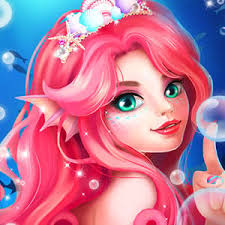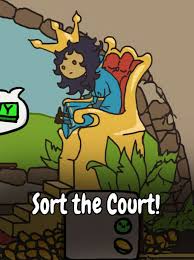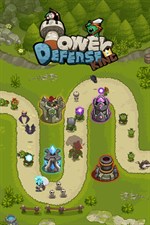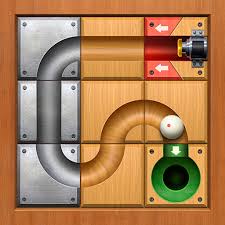Pacman Unblocked
Pacman Unblocked, one of the most iconic and enduring video games, has captivated audiences for over four decades. Click-clack, click-clack. The relentless chase, the simple yet profound objective, and the nostalgic charm of a dot-munching, ghost-dodging yellow circle continue to enthrall players of all ages. Developed by Namco and released in 1980, this arcade game revolutionized the gaming world by introducing a character-based system, which was relatively novel at the time. In this blog post, we’ll delve into the rich history of Pac-Man, explore its game mechanics, discuss its cultural impact, and examine its enduring legacy.
The Features of Pacman
Pacman, originally named “Puck-Man” in Japan, was the brainchild of Toru Iwatani, a Namco employee who desired to create a game that would appeal to a broader audience, including women. The game was later rebranded as Pac-Man for Western audiences to avoid potential vandalism that could easily alter the original Puck-Man name to a less appropriate term. Its release on May 22, 1980, marked a pivotal moment in the gaming industry. Unlike the violent and shooter-themed games of its era, Pac-Man showcased a maze chase game that required wit, strategy, and quick reflexes.
The game’s objective is deceptively simple: navigate Pacman through a maze filled with dots, power pellets, and four relentless ghosts named Blinky, Pinky, Inky, and Clyde. By consuming all the dots in the maze, players advance to the next level. Power pellets offer a temporary advantage, turning the ghosts blue and vulnerable, allowing Pac-Man to chase and eat them for additional points. However, as players progress, the speed and intelligence of the ghosts increase, making survival an escalating challenge.
Game Mechanics and Strategy
At first glance, Pacman might seem straightforward, but its gameplay is underpinned by intricate mechanics which require a strategic approach to master. Each ghost follows a unique AI pattern: Blinky chases Pac-Man directly, Pinky attempts to ambush by anticipating Pac-Man’s movements, Inky’s strategy is influenced by Blinky and Pac-Man’s position, while Clyde alternates between chasing Pac-Man and wandering off.
Successful players memorize these movement patterns to outsmart the ghosts, strategically using tunnels to cross from one side of the maze to the other and cornering the ghosts using the power pellets when the timing is perfect. Higher levels introduce increasingly complex mazes and faster ghost movements, compelling players to adapt and refine their strategies continually
Pacman’s simplistic yet captivating design, character-driven gameplay, and relatable objectives quickly ingrained it into the fabric of popular culture. The game transcended traditional gamer demographics, appealing to a wider audience and significantly contributing to the growth of the gaming industry. It inspired a plethora of merchandise, including toys, clothing, an animated television series, and even a hit song, “Pac-Man Fever” by Buckner & Garcia.
The cultural impact of Pacman is immeasurable. It became a symbol of the 1980s, representing the arcade era’s golden age. As a pioneer of character-driven games, Pac-Man paved the way for future gaming mascots like Mario, Sonic, and many others. The game’s simplistic yet addictive gameplay influenced not only future game design but also the expansion of gaming into mainstream entertainment. It broke gender and age barriers, showing that video games could be enjoyed by everyone.
Enduring Legacy
Fast forward to today, and Pacman’s legacy continues to thrive. The game has been ported to numerous platforms across different generations of consoles, from the Atari 2600 to the latest smartphones and everything in between. Modern iterations and spin-offs, such as Pac-Man Championship Edition and the recently celebrated Pac-Man 99, keep the franchise relevant, appealing to new generations of gamers while satisfying long-time fans.
Moreover, Pacman influence extends beyond the gaming arena. It has been referenced in movies, television shows, and even in academic studies exploring its game theory and AI patterns. Museums worldwide, including the Smithsonian in Washington, D.C., have honored Pac-Man as a significant part of digital art and history.
Tips and Tricks for New Players
To newcomers stepping into the world of pacman, here are a few tips to help you navigate the mazes more effectively:
Learn the Ghosts’ Patterns: Understanding the unique behavior of each ghost can give you a strategic edge. Remember that Blinky chases directly, Pinky tries to ambush, Inky’s movements are variable, and Clyde’s behavior alternates.
Use Power Pellets Wisely: Don’t consume power pellets immediately. Lure the ghosts close to you before picking one up, so you can quickly munch them for extra points.
Stay Close to Tunnels: Tunnels that connect the sides of the maze can be lifesavers, allowing you to escape when surrounded by ghosts.
Practice Cornering Techniques: Smooth turns can shave off precious milliseconds, which could be the difference between life and game over.
Conclusion
Pacman is far more than just a game; it is a cultural icon that has resonated through generations. Its innovative design, entertaining gameplay, and broad appeal have cemented its place in the annals of video gaming history. Whether you are a nostalgia-seeking veteran or a curious newcomer, the world of Pac-Man offers challenges and joy in equal measure. So, the next time you face the familiar maze, remember: every dot counts, every ghost has a pattern, and the thrill of the chase is timeless.













